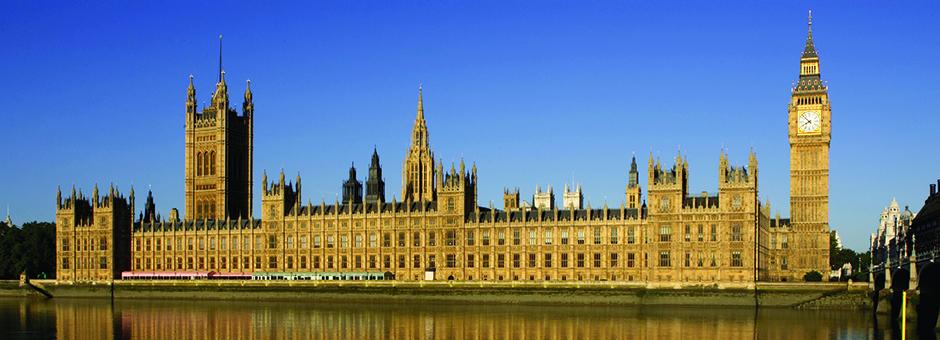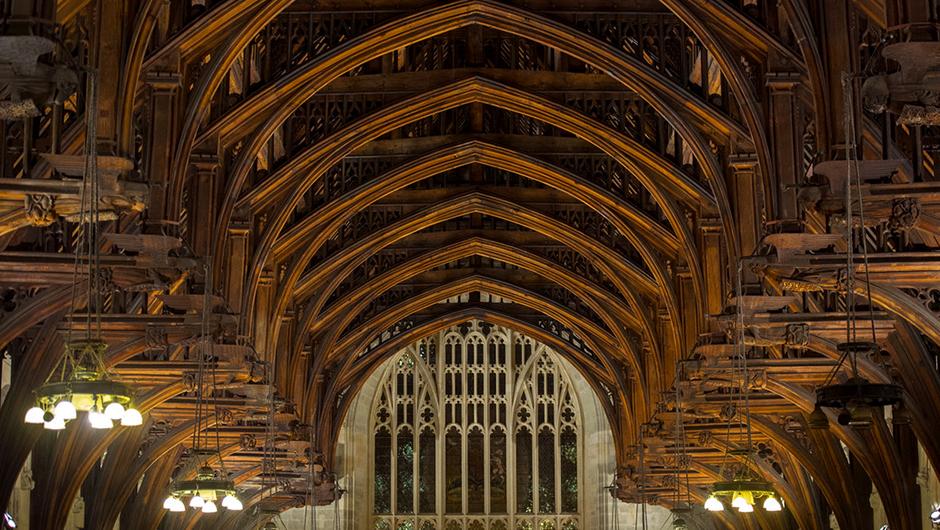An extraordinary history
Part of the fabric of our democracy
The Palace has a rich and remarkable history. The first royal palaces on this site were built by King Canute the Great and then Edward the Confessor during the 11th century.
Today the building in which the UK’s parliamentarians conduct their daily business also ranks as one of the world’s most recognisable landmarks alongside the Eiffel Tower, the Pyramids, the Statue of Liberty and the Great Wall of China.

An important site for almost 1,000 years
The oldest building on today’s Parliamentary estate is Westminster Hall, which has been the scene of great moments in our country’s political life. It was built over 900 years ago by William II and was thought to be the largest hall in Europe at the time.

The first English parliaments were held in Westminster Hall by Simon de Montfort when representatives from cities and boroughs joined knights to discuss matters of national concern for the first time in 1265. These meetings were the foundation of UK democracy and form a direct link to today’s House of Commons. The Hall itself has been the scene of historic events in our nation’s history, including the state trials of William Wallace, Sir Thomas More, Guy Fawkes and Charles I.
The birth of a remarkable building
In 1834 the old Palace of Westminster burned down. The only significant medieval parts to survive were Westminster Hall, the Cloisters of St Stephens, the Chapel of St Mary Undercroft and the Jewel Tower. The architect Charles Barry won the competition to design a new Palace and purpose-built Houses of Parliament. His assistant, Augustus Welby Pugin, designed most of the Palace’s ornate interiors, carvings and furniture.
The first stone was laid in 1840. Most of the work was done by 1860 but the Palace was not ultimately finished until 1870. It took 16 years longer than estimated and cost £2.5m, three times the original budget.
An architectural wonder
The building is constructed from Anston limestone and set on top of a huge concrete raft on the banks of the Thames to keep the estate stable. It has a floorplate the size of 16 football pitches with 1,100 rooms, 100 staircases, three miles of passageways, four floors and 65 different levels.
The debating chambers for the two Houses lie on opposite sides of a central lobby and are part of the spine of the Palace. There are three towers: The Elizabeth Tower, the clock tower which houses Big Ben; Victoria Tower, home to parliamentary archives dating back to 1497, and the Central Tower, originally designed as part of a ventilation system.

The Elizabeth Tower
The Elizabeth Tower was designed by Augustus Pugin and originally called the Clock Tower but was renamed in 2012 to mark the Diamond Jubilee of Queen Elizabeth II. It houses the Palace’s striking clock and Big Ben, the nickname for the largest of the tower’s five bells. The tower opened in 1859 as the stage for the most accurate four-faced striking and chiming clock in the world. Today it is a cultural symbol of stability and continuity recognised by millions all over the globe.
